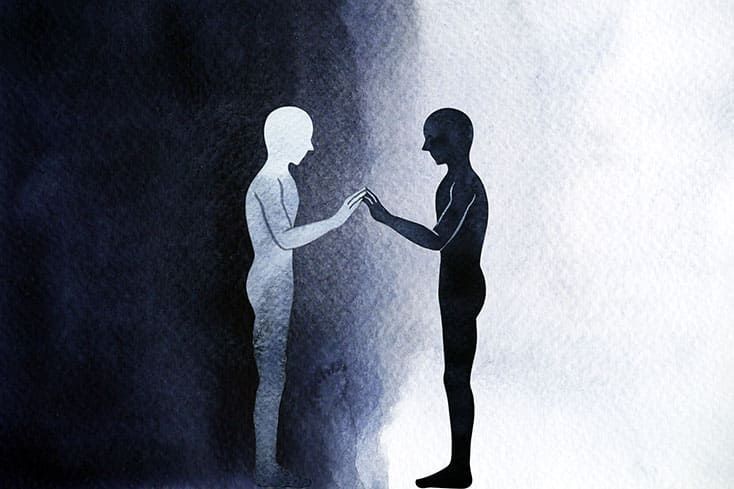神經回饋:談話治療與藥物治療的輔助療法 | Neurofeedback: A Complement to Talk Therapy and Medication
MHACC 雙語部落格 Bilingual Blog
Scroll down for the English Version ⬇️
作者:Matthew J. Fleischman, PhD,Henry M. Kaiser, PsyD, MBA,及 Darla Meulemans, MA, CADC
原始來源在此:http://nami.org/other-treatments/neurofeedback-a-complement-to-talk-therapy-and-medication/
2021年8月25日
有多少人曾經嘗試過談話治療並取得進展,卻最終覺得仍然不夠?有多少病人使用了藥物治療卻依然出現嚴重症狀?可能多到數不清。
如果有一種方法可以減輕憂鬱、焦慮、創傷與注意力問題的症狀,同時也能與談話治療與藥物治療搭配使用,那會怎麼樣?一種名為「神經回饋(Neurofeedback)」的新療法正展現出這樣的前景。
當我們稱這種方法為「新」,我們的意思是它對心理健康照護體系而言是新的。事實上,神經回饋已有超過50年的歷史,並已激發超過2,400篇相關研究論文的發表——至今,實務人員已在超過25萬次療程中使用這種方法。
神經回饋從完全不同的角度處理心理健康問題——透過訓練我們的大腦來改善自我調節能力。
當自我調節能力提升,症狀就會減輕。試想,如果一個有心理健康困擾的人能睡得更好、更能專注、更少焦慮、反應也更不衝動,這將帶來多大的影響。這就是為什麼我們——神經回饋倡議計畫(Neurofeedback Advocacy Project, NAP)——相信這種療法應廣泛應用於更多健康與心理健康照護機構中。
什麼是神經回饋?
大腦是一種由超過1000億個神經元組成的物理結構,神經元是負責傳遞訊息的專門細胞。神經元受到各種神經化學物質的影響與控制,例如血清素等神經傳導物質,以調節我們所有的心理過程。這也是精神藥物的基礎:透過藥物影響大腦中特定神經化學物質的濃度與相互作用,就能改變心理過程。
大腦同時也是一個複雜的資訊網絡。電化學資訊透過超過125兆個突觸(細胞間的間隙)在神經元之間傳遞。為了正常運作,這個細胞間的通訊系統必須順暢且協調。像其他複雜系統一樣,它需要持續的回饋來進行自我調節。
舉例來說,請想像一棟建築物的冷暖氣系統。恆溫器會持續測量房間溫度並提供系統回饋。如果溫度過高,恆溫器會發出訊號關閉暖氣。大腦的運作方式也類似(儘管更加複雜)。
大腦會持續監控自身的電化學活動,並依據回饋進行調整。當這種內在監控功能出現問題——也就是神經回饋系統失調——就會導致失調現象。當壓力干擾了大腦網絡內部的溝通,大腦就無法有效地自我調節,進而影響正常功能與心理過程。
我們對這套回饋調節系統的理解在過去幾十年中大幅提升。早期的研究著重於「生理回饋」(biofeedback),也就是透過影響身體來調節不同的生理過程。例如,我們發現改變一個人手部的溫度可以幫助他們放鬆。一位科學家甚至發現,用牛奶作為獎勵能改變貓的大腦波模式,使牠們更能冷靜專注,並最終預防癲癇發作。
隨著我們對生理回饋的認識增長,研究開始專注於大腦的調節過程——神經回饋——並展開針對人類的實驗,研究對象包括癲癇症、ADD/ADHD、焦慮症與PTSD等。
療程是什麼樣子?
自從最初用貓進行的突破性實驗以來,神經回饋在這50年間有了重大進展。現在,在神經回饋療程中,病人會坐在一張舒適的椅子上,玩電玩或看電影。治療師會在病人頭皮上放置感測器,這些感測器可讀取大腦波。經過兩到三次療程後,治療師就能了解這位個體的大腦波情況,判斷出哪些水平與模式屬於「最佳狀態」,也就是能產生最有效功能的狀態。
一旦找出病人的最佳大腦波設定,療程就開始了。專用軟體會持續監控病人的大腦波,當偵測到正向或理想的波形時,會改變螢幕上的內容。例如,加快電玩中汽車的速度,或放大電影的播放畫面。
隨著療程進行,病人的大腦會自動調整。它會「辨識出」某些大腦波模式會帶來正向結果(像是更快的車或更大的畫面),並根據這些回饋來改變自己的運作。這個自我調節過程是自然發生的——病人無需刻意思考或努力。
在療程過程中,病人通常會與治療師討論螢幕上的內容、分享感受或回答問題,這有助於治療師確認感測器放置正確、讀取的大腦波準確,以及軟體回饋的操作正確。
在每次療程結束後,病人與治療師會一起檢視記錄的進展。目標是在大約20次療程內,讓病人症狀獲得緩解。透過幫助大腦「學習」將特定大腦波與正向結果連結,我們讓它學會自我調節,提升整體功能,並支持健康的心理歷程。
雖然神經回饋無法取代心理治療與藥物治療,但它是一種極佳的輔助療法。研究顯示,將神經回饋納入治療計畫的人,更能投入治療,也更能實行治療建議——而且通常需要更少的藥物。
儘管神經回饋的可信度正快速提升,它過去仍主要只透過自費制的私人診所提供。NAP正致力於改變這種情況。我們的使命是將神經回饋導入各種機構與醫療系統中,特別是針對那些服務不足或難以服務的群體。
我們的希望是,神經科學的最新進展能改善心理健康照護,並讓提供者能更多地依靠大腦本身的自我療癒能力。
Dr. Matthew Fleischman 是一位臨床心理學家,擁有30年神經回饋經驗。他曾擔任NIH資助的「侵略性兒童治療多點實施研究」的首席研究員。他成立NAP計畫時,將神經回饋設備借給三個服務多元客戶的在地機構,觀察其效果。基於該經驗,該計畫已擴展至另外15個機構,並正招募另25個。
Dr. Henry M. Kaiser 曾任Kaiser基金會醫院與健康計畫董事、Kaiser家庭基金會受託人。他的職業生涯包括多項創業與風險投資活動,核心主題皆與企業或創新環境中的科技與生命科學有關。
Darla Meulemans, MA, CADC 在奧勒岡州波特蘭經營私人健康工作室。她的職涯包括超過15年的社區心理健康與成癮治療服務與領導經驗,亦負責學校與醫院中的相關計畫。她也為使用神經回饋的臨床人員提供專業訓練與指導。
Written by: Matthew J. Fleischman, PhD, Henry M. Kaiser, PsyD, MBA and Darla Meulemans, MA, CADC
Original Source Here: http://nami.org/other-treatments/neurofeedback-a-complement-to-talk-therapy-and-medication/
August 25 2021
How many people have tried talk therapy and made progress, but ultimately felt that it wasn’t enough? How many patients have tried medications and still experienced severe symptoms? Probably too many to count.
What if there were a way of reducing symptoms of depression, anxiety, trauma and attention problems that could complement talk therapy and medication? A new approach to treatment called “neurofeedback” yields promising results of this nature.
Now, when we describe this method as “new,” we simply mean that it’s new to the mental health care system. In fact, neurofeedback has been around for over 50 years and has inspired more than 2,400 published papers — and practitioners have used this approach in over 250,000 sessions to date.
Neurofeedback addresses problems with mental health from an entirely different direction — by training our brains to better self-regulate.
When self-regulation improves, symptoms lessen. Imagine the impact on any individual with a mental health condition if they were able to sleep better, focus better, feel less anxious and react less impulsively. This is why we, The Neurofeedback Advocacy Project (NAP), believe this treatment approach should be widely implemented in more health and mental health care settings.
What is Neurofeedback?
The brain has a physical structure made up of over 100 billion neurons, specialized cells that transmit information. Neurons are influenced and controlled by various neurochemicals, such as neurotransmitters like serotonin, to affect and regulate all of our mental processes. This is the foundation for psychotropic medications: by using a medication to influence the levels and interactions of certain neurochemicals available in the brain, we can affect the resulting mental processes.
The brain is also a complex informational network. Electro-chemical information is transmitted between neurons through a vast web of over 125 trillion synapses (the gaps between the cells). In order to perform well, this cell-to-cell communication system must be smooth and in sync. Like any other complex system, it requires constant feedback in order to self-regulate.
For example, consider the heating and air system in a building. The thermostat constantly measures the temperature of the room and provides feedback to the system. If the temperature is too high, the thermostat sends a signal to turn off the heat. The brain operates in a similar (although significantly more complex) fashion.
The brain constantly monitors its own electro-chemical activities and uses that feedback to adjust. Any issues with that internal monitoring — dysfunction in the neurofeedback system — can result in dysregulation. When stress has disrupted communication within our brain’s network, it cannot effectively regulate itself, disrupting normal functions and impacting mental processes.
Our understanding of this feedback regulation system has evolved significantly over the years. Early research focused on “biofeedback,” influencing the body in order to affect different processes. For example, we learned that changing the temperature of a person’s hands could help them relax. One scientist discovered that using milk as a reward could alter brainwave patterns in cats, improving calm focus and ultimately preventing the cats from having seizures.
As we learned more about biofeedback, research evolved to focus specifically on the regulatory process of the brain — neurofeedback — and include experiments in humans with a variety of conditions including epilepsy, ADD/ADHD, anxiety, and PTSD.
What Does Treatment Look Like?
Neurofeedback has come a long way in the 50 years since the initial breakthrough with cats. Now, in a neurofeedback session, the patient sits in a comfortable chair where they either play a video game or watch a movie. The practitioner places sensors, which read brainwaves, onto the patient’s scalp. Over two to three sessions, the practitioner develops an understanding of that individual’s brainwaves, determining what levels and patterns are “optimal” and lead to the most effective functioning.
Once the practitioner has identified the optimal brainwave setting for the patient, treatment begins. Specialized software monitors the patient's brainwaves, and when it identifies positive or desired patterns, it alters what the patient sees on the TV screen. For example, boosting the speed of the car they are controlling in a video game or increasing the size of the viewing window for their movie.
As the treatment goes on, the patient’s brain automatically adjusts. It “recognizes” that specific brainwave patterns result in positive outcomes (the faster car or better view of the movie) and uses that feedback to adjust its functioning. This self-regulation happens naturally — there is no conscious effort by the patient.
During a session, a patient will typically talk to their practitioner about what they see on the screen, share their feelings or respond to questions, which helps the practitioner confirm that the sensor placement, brainwave readings and software actions are correct.
At the end of a session, the patient and their practitioner review the recorded progress. The goal is for patients to experience a reduction in symptoms over the course of a typical 20-session course of treatment. By helping the brain “learn” to connect specific brainwaves with positive outcomes, we help it learn to regulate itself, improve overall functioning and support healthy mental processes.
While neurofeedback is not a replacement for psychotherapy and medications, it is an excellent complement. Researchshows that people who incorporate neurofeedback into their treatment plan feel better able to engage with therapy and implement therapeutic suggestions — and they often need fewer medications.
While neurofeedback has been gaining credibility rapidly, recently, it has been available only from private practice providers on a fee-for-service basis. The NAP is working to change this. Our mission is to implement neurofeedback within agencies and healthcare systems, particularly for those who are underserved or difficult to serve.
Our hope is for recent advances in neuroscience to improve mental health care and enable providers to rely more on the brain’s capacity for self-healing.
Dr. Matthew Fleischman is a clinical psychologist with 30 years’ experience with neurofeedback. He served as an NIH Principal Investigator on a Multi-site Implementation of Treatment of Aggressive Children. He started the NAP by lending neurofeedback equipment to three local agencies serving a range of clients to see how effective the method could be. Based on that experience, the project has expanded to 15 more agencies and is recruiting another 25.
Dr. Henry M. Kaiser served as a Director of Kaiser Foundation Hospitals & Health Plan and a Trustee of the Kaiser Family Foundation. His various professional venture capital and entrepreneurial activities have in common the theme of working with innovation in corporate and/or entrepreneurial settings, in technology and in life sciences.
Darla Meulemans, MA, CADC has a private wellness practice in Portland, Oregon. Darla's career includes more than 15 years of direct service and leadership in community mental health and addiction treatment in addition to running school and hospital-based programs. Darla provides professional training and mentoring to clinicians using neurofeedback.
Sign up for our Newsletter
訂閱每月簡訊獲得最新資訊












